What's New
Displaying results 3641 - 3650 of 4052
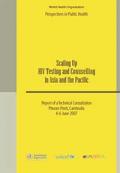
Resource | Publications,
In response to concerns over low coverage of HIV testing and counselling in the Asia Pacific region, a "Joint WHO/UNICEF/UNAIDS technical consultation on scaling up HIV testing and counselling in the Asia Pacific" was held in Phnom Penh, Cambodia from 4 to 6 June 2007. The aim of the meeting was to discuss how to scale up HIV testing and counselling services, discuss core public health approaches, ethical principles and human rights values to guide the expansion of HIV testing and counselling, and identify and agree on key actions for follow-up at the regional and country level for policy and programme implementation.
Participants recognized and agreed that there is an urgent need to scale up access to HIV counselling and testing in countries of the region as a means of enhancing access to comprehensive HIV prevention, care and treatment. Existing models of voluntary counselling and testing (client-initiated HIV testing and counselling) need to be strengthened, scaled up and complemented by approaches that can best fit the local epidemiological and social context and build on the potential of health services to offer HIV counselling and testing (provider-initiated HIV testing and counselling). A set of key conclusions and recommendations was agreed on by the consultation participants.
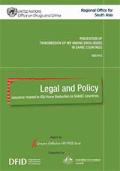
Resource | Publications,
AIDS is an extraordinary disease. As such, it requires an extraordinary response.
In South Asia, the HIV epidemic is heterogeneous in nature. Bangladesh, Nepal and Pakistan have HIV
epidemics that are primarily driven by injecting drug use. India — a country with one of the largest numbers of people living with HIV/AIDS — features an epidemic in its North Eastern region which is primarily driven by injecting drug use. Bhutan, the Maldives and Sri Lanka are countries with growing number of injecting drug users. This document examines whether the laws and policies currently in South Asia are adequate to meet the challenges posed by the threat of HIV/AIDS.
A consistent body of evidence has established that comprehensive HIV prevention programmes which
include needle syringe programmes and oral substitution as part of a comprehensive package reduce drug-related HIV risk behavior (such as needle sharing, unsafe injecting, and frequency of injection). Similarly, there is strong evidence that substitution treatment reduces criminal behavior and illicit opioid use. It also increases treatment retention and improves the overall health status of drug users infected with HIV. These are outcomes which we all seek to promote.
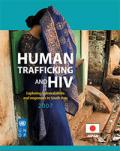
Resource | Publications,
HIV/AIDS and human trafficking threaten human security and human development. Millions of women and girls have been trafficked across borders and within countries in recent years, making human trafficking a global industry that generates an estimated five to seven billion U.S. dollars each year.
In an effort to reduce the dual vulnerabilities of trafficking and HIV among women and girls through greater understanding of the issues and the current state of play in the region, the UNDP RCC convened a Rapid Assessment Studies (RAS) in six South Asian countries: Afghanistan, Bangladesh, India, Nepal, Pakistan and Sri Lanka. The RAS highlights the magnitude, dimensions, causes, consequences and key interventions on HIV/AIDS and human trafficking. The emphasis was on exploring the linkage of the two issues and mainstreaming at different levels of interventions – policy, legislation and programming. A compilation of findings from the RAS is presented in this publication, which highlights the critical links between the two issues and the paucity of data and concerted efforts to address the two together. A number of areas of convergence and joint initiatives have also been identified and recommended.
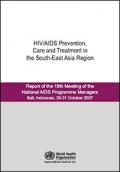
Resource | Publications,
The World Health Organization (WHO) is committed to support Member countries in developing comprehensive and sustainable national AIDS programmes. WHO plays a key role in HIV/AIDS prevention and control in the health sector through providing strategic direction, normative guidance and technical support for national AIDS programmes – through long-term staff in high-burden countries and in-country technical missions.
The National AIDS Programme Managers’ Meeting is an effective forum for sharing experiences between countries, which subsequently leads to strengthening of national AIDS programmes. This annual meeting provides an opportunity for AIDS managers and WHO to review the progress made in AIDS control over the past year, identify and discuss key constraints, formulate possible strategies for replicating successes, and draft plans for the implementation of those strategies at the national and regional level.

Resource | Publications,
The aim of this review was to gather information relating to HIV prevention, care and treatment in prisons in the WHO South-East Asia Region. Countries selected for inclusion in the review were India, Indonesia, Nepal and Thailand.
South-East Asia is second only to sub-Saharan Africa in terms of estimated numbers of people living with HIV. South-East Asia has also been home to some stunning successes in scaling up HIV prevention, care and treatment interventions. However, the role of HIV transmission in prisons as a key factor for the spread of HIV in the community has largely been ignored. Prisoners are often seen as less deserving of health care or other assistance, particularly when resources are scarce. Yet it must be remembered that prisoners are only temporarily removed from the general community. At some stage, most prisoners will be released and resume living in the community. When prisoners are released, so too are their infections and illnesses.

Resource | Presentations,
Scientific advances over the past 20 years have shown that drug addiction is a chronic, relapsing disease that results from the prolonged effects of drugs on the brain. As with many other brain diseases, addiction has embedded behavioral and social-context aspects that are important parts of the disorder itself. Therefore, the most effective treatment approaches will include biological, behavioral, and social-context components. Recognizing addiction as a chronic, relapsing brain disorder characterized by compulsive drug seeking and use can impact society's overall health and social policy strategies and help diminish the health and social costs associated with drug abuse and addiction.
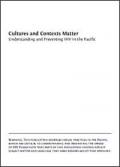
Resource | Publications,
The HIV epidemiological situation varies greatly within and between Pacific Island countries and territories (PICT), with epidemics increasing in different places at different speeds and with different intensities. By the end of 2004, many countries were identified as low prevalence epidemics reporting less than 10 HIV infections (e.g., American Samoa, Cook Islands, Nauru, Solomon Islands, Tuvalu, Vanuatu, and Wallis and Futuna). While statistics of person living with HIV (PLWH) might appear small in many countries, these can reflect high rates of infection because of their tiny populations—and the potential impact can be great. As Jenkins (2005) explains, “the distribution of recorded infections might be viewed in different ways. The ‘cumulative incidence per 100,000’ is a good indicator of the potential impact of HIV on the local population. Even small numbers of cases in small populations (e.g., Tuvalu), particularly if found among young working men, can have a devastating impact at the local level.” Only nine people in Tuvalu have been diagnosed with HIV. However, with a population of only 9,600, the rate of infection in Tuvalu is close to that of French Polynesia and Guam, which have some of the highest numbers of HIV infections in the Pacific outside of PNG.
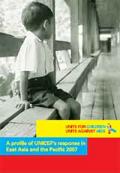
Resource | Publications,
This campaign could not have come at a more opportune time in East Asia and the Pacific. While HIV
prevalence in the region remains relatively low, the virus poses a serious threat. East Asia’s massive population coupled with rapidly changing social and economic dynamics could escalate epidemics, and in turn, jeopardize the tremendous development gains that have greatly benefited millions of children in the region. The threat is of a different nature in the Pacific, where HIV could devastate sparse populations and undermine whole cultures and societies.
This 2007 report is updated from an earlier version released in October 2006. Our aim is to provide the latest information of collaborative actions between UNICEF and governments, civil society, the United Nations system and international partners in East Asia and the Pacific region. It is an account of progress, from the purview of UNICEF around the Four Ps of primary prevention, preventing mother-to-child transmission (PMTCT), paediatric AIDS treatment and the protection and care of children affected by AIDS.

Resource | Publications,
Hong Kong, located in Asia the new burning place of HIV infection, is still having a relatively low prevalence of HIV infection. While sexual transmission is the predominant route of transmission in Hong Kong, an upsurge of infection in injecting drug users is a concern from the experience in other Asian localities. Various public health measures in Hong Kong have kept the HIV prevalence of drug users at low level, as compared with neighbouring cities.
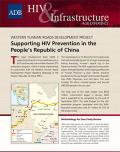
Resource | Publications,
The Asian Development Bank (ADB) is supporting a human immunodeficiency virus (HIV) and sexually transmitted infection (STI) prevention program, which is being implemented in conjunction with the Western Yunnan Roads Development Project (Baolong Highway) in the People’s Republic of China (PRC).





